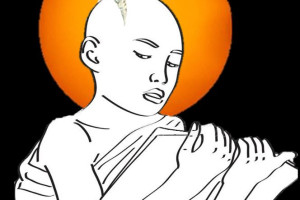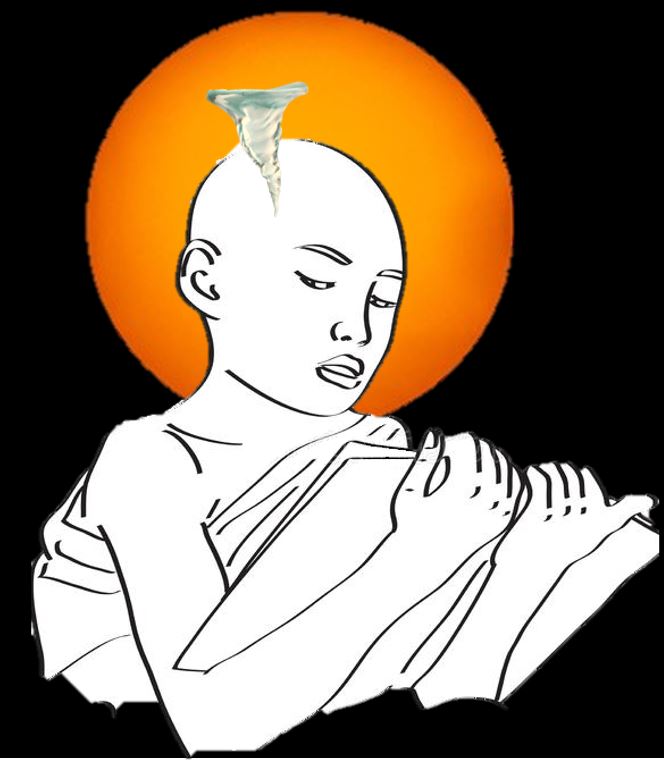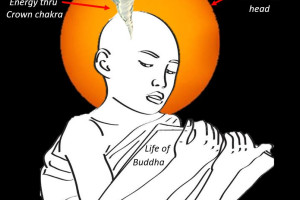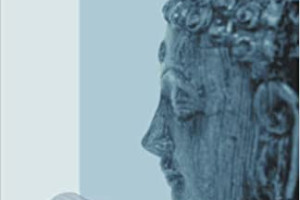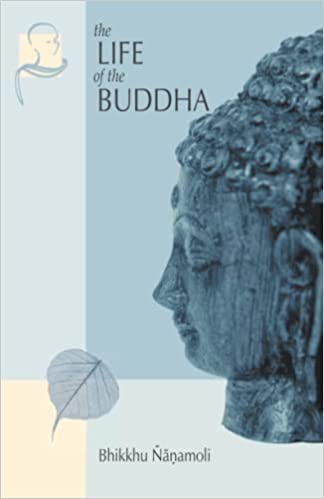Buddha Series-3: Reading "The Life Of The Buddha" - Bhikku Nanomoli Mahākāśyapa
January 10-15, 2023
Houston, Texas
I generally read books either scanning for wisdom or techniques in that particular subject or field of interest like spirituality, science, work-related, etc. I am not a natural reader (developed a recent reading habit) and not one who reads books for leisure, magazine, or fiction, the nature of my psyche simply is not accommodating those types of reading from childhood.
So, I generally classify books into 3 categories and stick with it:
- Book of Wisdom
- Book of Techniques/ Methods
- Combination of both
There is a 4th category of the book very rare which is "Experience". Very rarely book gives you a first-hand Experience. How many books can we say belonged to this category?
There is a question that burns in my heart for a long time, why I took this birth? why I took this birth?
The answer is to finish the austerities to stop this rebirth and samsara rut. But still not satisfied with the answer to the burning question in the heart and with this birth because austerities are not done yet to a satisfactory level.
But when I read "The Life Of The Buddha - According to the Pali Canon" - Bhikku Nanomoli, the burning question is doused. My heart calmed and reached home. No more anxiety and calmness prevailed!
After finishing the book, I was satisfied! The feeling was like this "The reason for taking birth is fulfilled, is there anything more to do? The end has been reached! The reason for taking birth is to read this type of book."
How many books can we say like that or give such an experience?

Sutble Energy while reading the book:
While reading the book thru that week, the subtle body had these energy forms around the head constantly.
An orange glow or sphere around the head while reading the book and whitish-yellowish funnel or whirlpool-like energy penetrating the head thru crown chakra.
Interestingly while checking the subtle body while doing meditation after breath infusion, my head and eyebrows were already shaved and was sitting like a Buddhist student.

Important instance in the book "Angulimala":
Following excerpt taken "The Life Of The Buddha - According to the Pali Canon" - Bhikku Nanomoli, Pg-134-135
First Voice. Thus I heard. Once when the Blessed One was living
at Savatthi a bandit had appeared in the realm of King Pasenadi of
Kosala. He was called Angulimala, that is to say, “Finger-necklace,”
and he was murderous, bloody-handed, given to blows and violence,
and merciless to all living beings. Villages, towns and districts were
laid waste by him. He went on murdering people, and he wore their
fingers as a necklace.
One morning the Blessed One took his bowl and outer robe, and
he went into Savatthi for alms. When he had wandered for alms in
Savatthi, and had returned from his alms round after the meal, he set
his resting place in order, and then, carrying his bowl and outer robe,
he took the road to where Angulimala then was.
Cowherds, shepherds, farmers, and travelers
saw the Blessed One
and they said: “Do not take that road, monk. On that road there is
the bandit Angulimala. Men have come by that road in bands of ten,
twenty, thirty and even forty from time to time, but they have all
fallen into the hands of Angulimala.”
When this was said, the Blessed One went on in silence. A second
time the same thing happened, and the Blessed One went on in
silence. A third time the same thing happened, and the Blessed One
went on in silence.
Seeing him coming in the distance, the robber Angulimala
thought: “It is wonderful, it is marvelous indeed! Men have come
along this road in bands of even forty from time to time. And now
this monk comes alone and unaccompanied. One would think he
had been fated to come. Why should I not take this monk’s life?”
Seizing his sword and shield and buckling on his bow and quiver,
he went in pursuit of the Blessed One.
Then the Blessed One performed a feat of supernormal power such that Angulimala, going as
fast as he could, was unable to catch up with the Blessed One who was
walking at his normal pace.
Then Angulimala thought: “It is wonderful, it is marvellous! I used to catch up with a galloping elephant and
seize it, or a galloping horse or a galloping chariot or a galloping deer.
But although I am going as fast as I can, I am unable to catch up with
this monk who is walking at his normal pace.”
He paused and called out: “Stop, monk! Stop, monk!”
“I have stopped, Angulimala; do you stop also.”
The robber thought: “These monks, sons of the Sakyans, speak
truth and assert truth; but though this monk is walking, yet he says: ‘I
have stopped, Angulimala; do you stop also.’
Suppose I question this
monk?” Then he addressed the Blessed One in stanzas:
“While you are walking, monk, you tell me you have
stopped;
But now when I have stopped, you say I have not stopped.
I ask of you, O monk, what is the meaning of it?
How is it you have stopped and I have not?”
“Angulimala, I have stopped for ever,
Forswearing violence to every living being,
But you have no restraint towards anything.
So that is why I have stopped and you have not.”
“Oh, at long last a sage I can revere,
This monk has now appeared in this great forest.
Surely I will for long renounce all evil,
Hearing your stanza setting forth the Dhamma.”
So saying, the robber took his sword and weapons
And flung them in a gaping chasm’s pit.
The robber worshipped the Sublime One’s feet
And then and there asked for the going forth.
The Enlightened One, the Sage of great compassion,
The teacher of the world with its gods,
Addressed him with these words: “Come, bhikkhu,”
And that was how he came to be a bhikkhu.

When I read this page and come to these lines,
Angulimala paused and called out: “Stop, monk! Stop, monk!”
Blessed Lord: “I have stopped, Angulimala; do you stop also.”
I panicked and was taken aback by a few feet holding my chest with my right hand and sitting in chair, as I heard the Buddha's voice again uttering “I have stopped, do you stop also.” The voice burst in my chest, as if Buddha spoke those words directly to me on how he spoke to Angulimala from a few feet away.
Again gathering strength to read on, came to the follwing lines:
Blessed Lord says:
“Angulimala, I have stopped for ever,
Forswearing violence to every living being,
But you have no restraint towards anything.
So that is why I have stopped and you have not.”
Lord Buddha asks a straightforward question to my face on forswearing violence and rooting out the violence from my psyche. There is an Angulimala inside me.
After several weeks, I saw the two parts of my psyche, one was good and virtuous and the other was evil and had exact Angulimala characteristics, we had hand combat and I killed the evil part of my psyche. It is not a permanent kill but we have time to time batter between the good and evil side of my own psyche, the victory & loss is alternating.
While reading the entire book, I felt as if I was sitting in front of Buddha while he was giving discourses to his disciples. Bhikku Nanamoli was indeed empowered na dkept the energy of Buddha given to him in a pristine form in the book.
Every spiritual seeker should learn about Buddha and this book is at the finest masterpeice.
There were several other important moments in the books and I would write about them in the coming posts:
- The moment Buddha says that he is second to none
- Building of cities by low, medium, and high-level deities
- How Sariputta and Moggallena diffused Davadatta's sinister schism in Sanga
- the moment Buddha leaves the body
- Mahākāśyapa berating Ananda
- The personality of Mahākāśyapa (I found him to be a very important monk, he led me to Acharya Mun)
- The Buddha exhausted all austerities before finding the middle path (at the end of the book)
In my previous post, I have written about visiting Tīrtha Series - 9: Sarnath (Deer-Park or Lord of Deer), Varanasi, India.
At the end of the book, it ends with a sad tone that by the end of the 15th century all forms of Buddhism in mainland India are destroyed. The loss is indeed to the mainland not to Buddhism. Times have changed and after the advent of Sri Shankaracharya, the tide of the spiritual texture of India was changed forever. There are hardly any Buddhist temples in India today, most of them are still in the cave or some ancient structures. Several mainstream Buddhist temples were converted to temples or destroyed during invasions or left dilapidated until crumbled to the ground.
There have been several communications and I was hinted that it was even at a much younger age which I was not aware of until it was hinted. The age of 14 (2006) was one of those incidents when visiting a Sarnath Buddhist temple in India where Buddha first preached after enlightenment is indeed a blessing after all the obstacles in the journey to the temple, and only a handful had a chance to see it. I can't recall anyone in mainstream India who has ever been to Buddhist temples because there isn't one in the vicinity except isolated archeological remains.
Here is the link to the book:
-
- · Marcia Beloved
- ·
I am not much of a reader but maybe I will read that book! It sounds like it penetrates.
Angulimala story is a famous one. The water used to wash the feet of Angulimala is also said to be very powerful and protective. There is a story where Bhikku Angulimala was recognized by the villagers and they circled him and beat him with sticks. Angulimala was full of remorse for his previous misdeeds and did not resist. Other monks or the Buddha came and told the villagers of the reform of Angulimala and the beating was stopped.
Buddha stressed virtue. Without it one cannot reach the final goal. One is told to:
Do only good deeds.
Refrain from all evil deeds.
Purify the mind.
Patanjali also lists yama and niyama as the base for practice. Some students accept and honor this while others regard it is optional. I’ve come to think that without development and adherence to virtue one could probably master the psychic mystic skills but until one perfects virtue the liberation described by Buddha as nibbana, eternal peace, would not be possible.
Your experiences with Buddhist teachings are really interesting, Ani. For me, nothing is lacking in Buddhas path of practice. It gives immediate results and is timeless.
-
Here is the link to download free pdf of the book:
The book is a collection and amalgamation from several Buddhist literature like tripatika, abhidhamma, etc. Bhikku Nanomoli was an British WW2 pilot.
After war, he went to Sri Lanka and became a monk in Theravada school. He wrote one of the first English translations of Pali cannons and introduced Buddha to the West.
It is interesting that all his fellow monks are amazed by his works because as an English man learning Pali language for four years, he translated most of them very precisely to English in those four years while learning itself. Later on, he died suddenly in his 50s without publishing.
After 2 decades, the successive monks identified his work scattered on his table and gathered them into a book and published it. I am stunned by the level of scholarship this monk had and indeed he was Pali scholar in his previous lives.
I have read other Buddhist books by renowned scholars but they get too analytical on details and language and miss the elegance and flow of Buddha energy to the readers, Bhikku Nanomoli had that free hand of transferring the Buddha energy and still maintain the precision. I liked the 8 fold path presentation and energy in this book much better than any other presentations/books, I have read before.
-
This is a great link to angulimala's back story as ahamsika and his attainment of nirvana in comic style story telling for kids.
Amar Chitra is famous magazine or children story book in India for last several decades, they did a great job for picturising ancient stories for children, it is also useful for adults many times.



